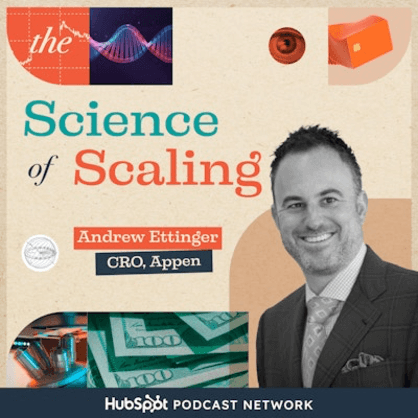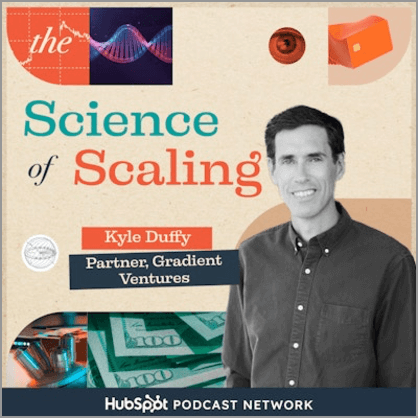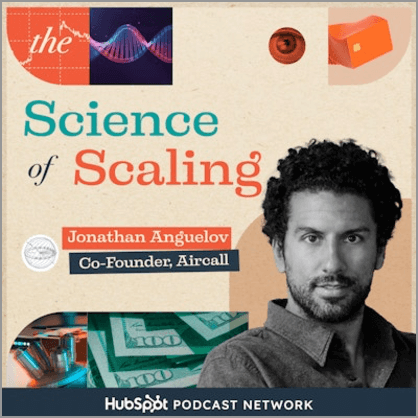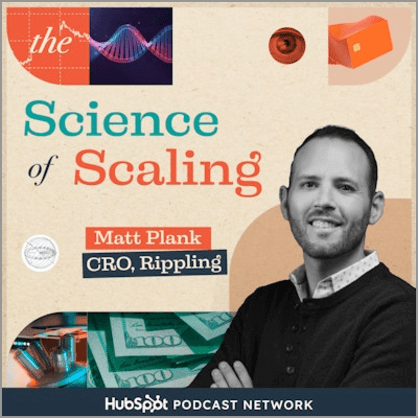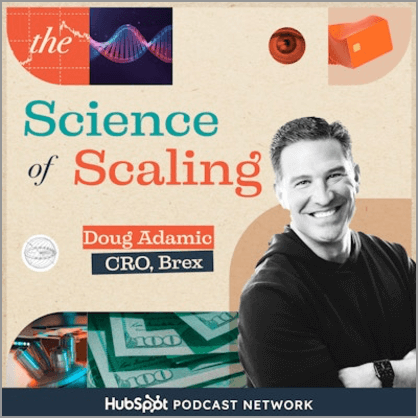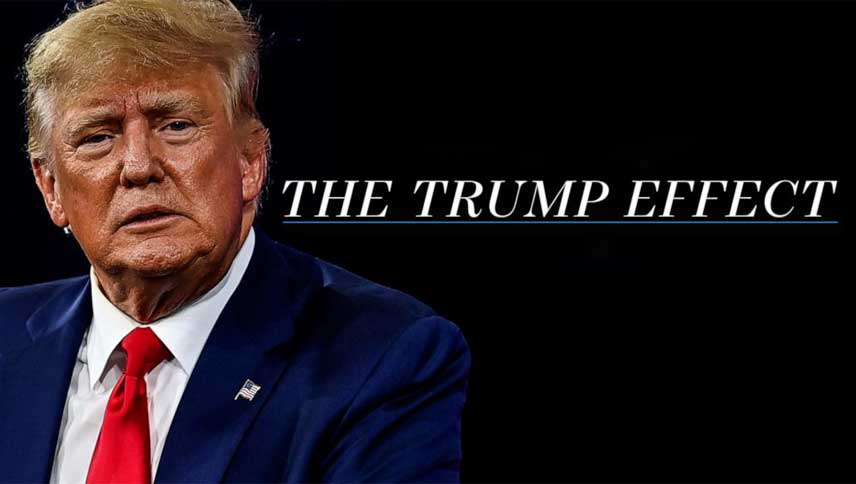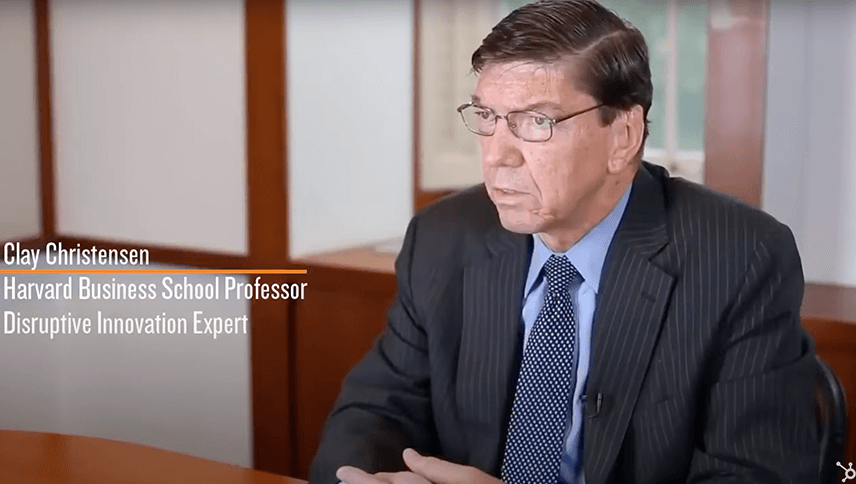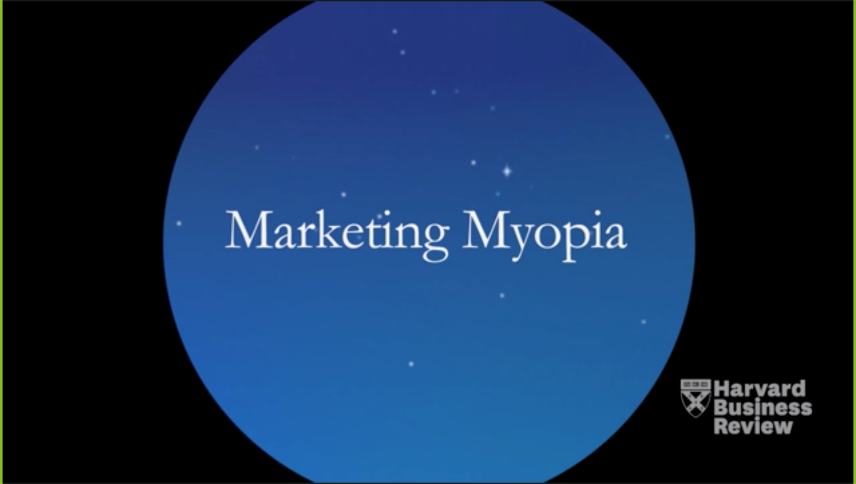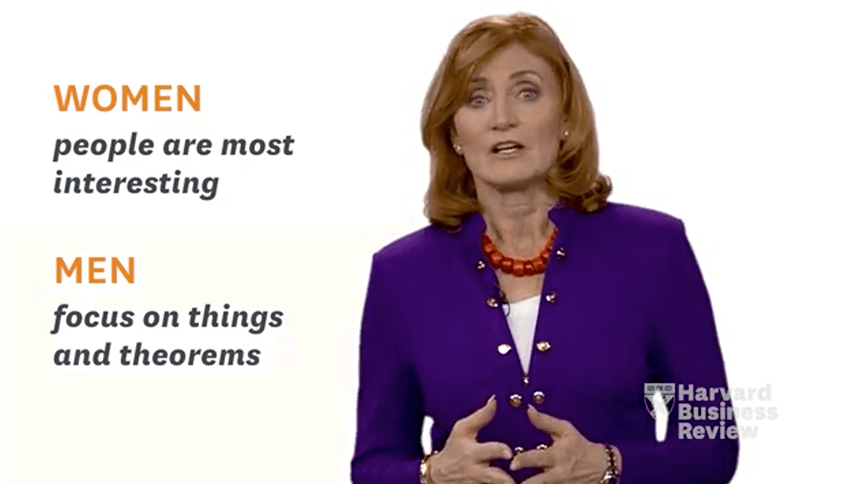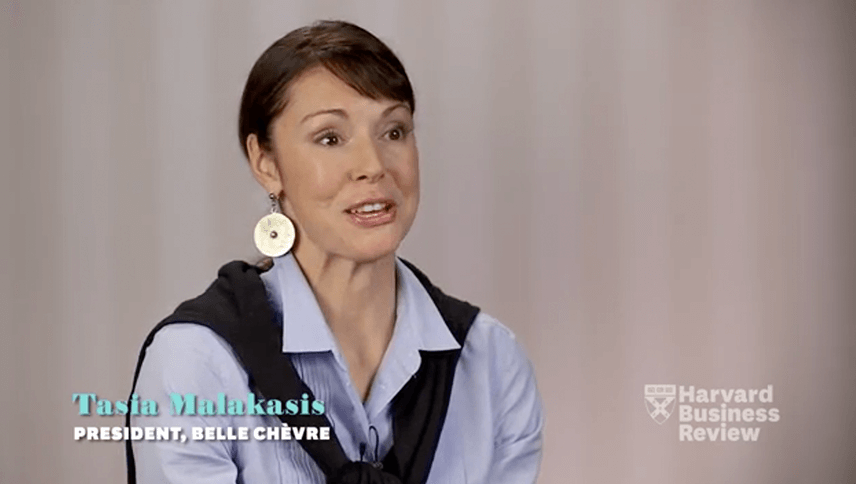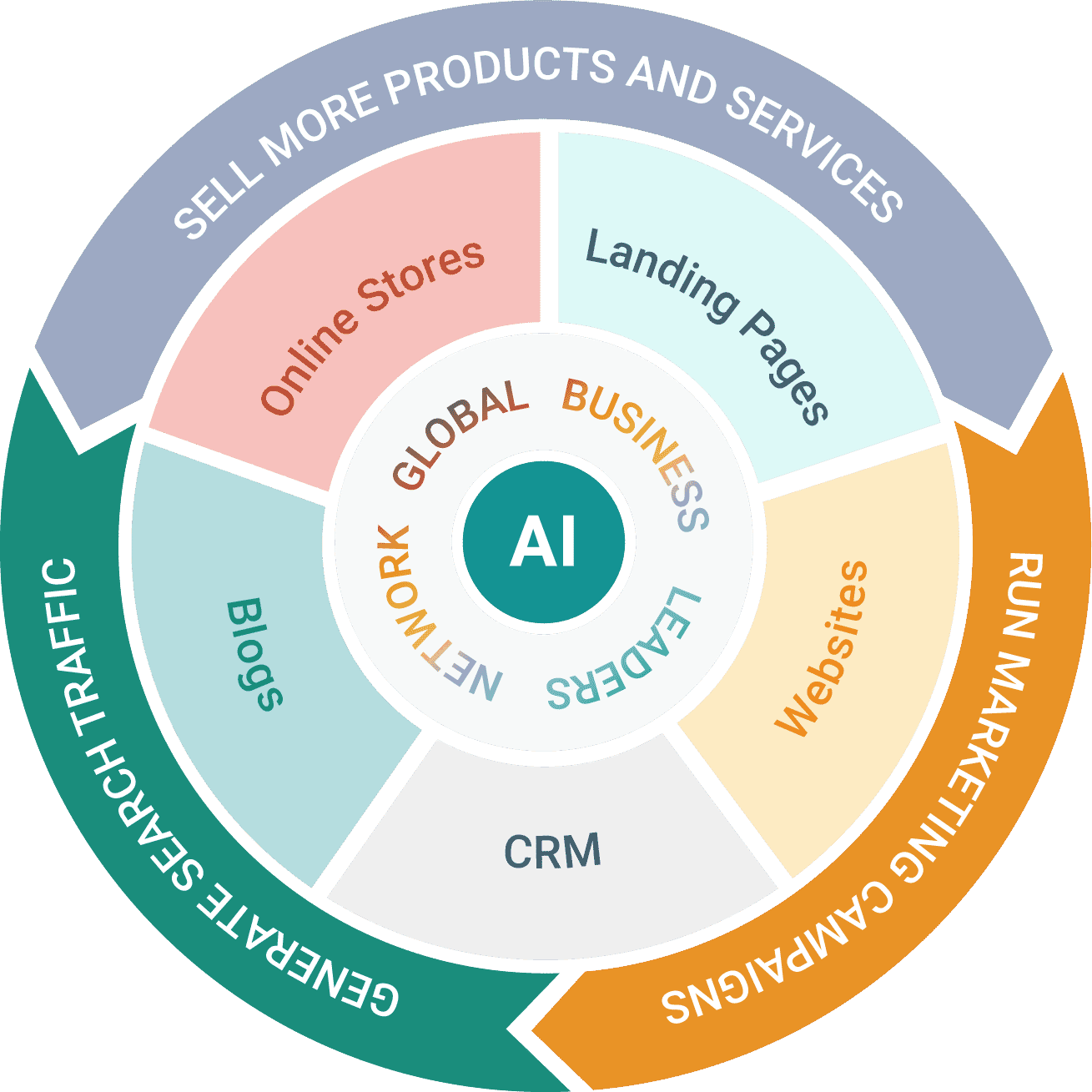How to Move from Founder Selling to Scaling a Sales Team
Jonathan Anguelov Co-Founder, Aircall
Nov 20, 2023
Mark Roberge: Hi folks, welcome to the Science of Scaling podcast. I’m your host, Mark Roberge. On this podcast, we explore and demystify the best practices of scaling a sales team from zero to hundreds of millions of dollars. And we do that by speaking with the folks who’ve been there and done that. The founders, the sales leaders from the best organizations out there.
Today I’m excited to speak with Jonathan Angeloff, the co founder at Aircall. Not only is Jonathan the co founder, he retains his title as chief sales officer. This is a co founder who values sales. From day one, he has been a scholar and studier of sales. He has executed the founder selling stage. He has executed the transition to the first sales team.
www. aircall. com He’s executed the transition to sales leader and empowering a system. He has driven that process and he stays very close to the front line, even though they’ve scaled to well over a hundred million dollars. I can’t think of a better person to unpack this relationship between the founder and the sales team as you navigate these different phases of growth.
All right, let’s dig in with Jonathan. You want to take us back to like,
Jonathan Anguelov: Yeah, of course. What we do basically is that we are a cloud based Uh, business phone system and a call center software, uh, design for SMBs that integrates. So Airco integrates with all the tools that sales or customer support departments are using like CRMs or helpdesk or anything that a person that is doing sales or customer service in general is using.
And so back in 2014, We started with that basic idea of, Hey, let’s revolutionize the way phone systems are working. So let’s make it very simple to set up pure cloud on your computer. No hard phone, no desk phone, no hardware at all. It’s a software. It is on your computer and your Mac and receiving the calls from it.
And then we added, of course, uh, mobile apps and so on. Back in the days, believe me, when we had to explain to people that to make phone calls, you will not have a desk phone on your, on your desk. That was a complicated thing. And for years we even asked ourself, are we going toward the right direction? And that’s how basically the story started back in 2014
Mark Roberge: with that crazy idea.
So that’s 2014, you, you have the concept, you’re building the product. And what we wanted to do today was like really explore the relationship between the founder and the sales team and the process of selling. As we go through this amazing journey that you’ve, you’ve taken them through. So back then you’re like a co founder, a small team.
Where are you all today?
Jonathan Anguelov: Okay. So to make it very simple. So today we are about 800 people across the world. We announced last year. Uh, that we reached the a hundred million dollar ARR mark. So we are way above a hundred million currently, and we’re still growing pretty fast. All this happened, yeah, in less than 10 years now.
And we’ve raised to date about 220 million cash at the billion dollar plus valuation. Back in 2021 was our, the last time we raised money, basically. Of course, when you building a product, the first thing is to be able to sell it. Very often as a founder. You’re not necessarily a seller, or you don’t necessarily want to sell.
You’re like a product guy, you’re imagining things, you can be an engineer. On my side and, uh, with only my co founder selling was always our thing. It was always, Hey, whatever we built, we want to sell it. And so very early with the product development, we started to sell it. And I was worried. I remember my co founder say, okay, let’s go public now and let’s start selling it.
And I’m like, come on, we’re just selling like a call forward that has no value, but we always still had to do it. And we could sell it for 5 a month. And people were happy to have like a, a desk phone number on their website and being able to receive calls from that number. Because of course you can imagine our first customers were, uh, very tiny companies, people selling on e commerce.
Whatever the paintings that they were doing in the backyard, but that was our first customers. And we started that very early in the days, the first 120 K of AR. So about 10 K MR, I did it on my own doing cold calling. And, uh, email,
Mark Roberge: I’m curious as more of a founder generalist, how do you dig into sales and learn those, those tactics?
If I’m being completely honest,
Jonathan Anguelov: I had zero sales experience by the time, like mutually zero sales experience in the SAS industry, honestly, uh, reading books helps a little bit, but not so much. What helps you, it’s practicing. I’ve been always a kid of the, of the word, which means basically I learn by doing.
And very early, I said, okay, it’s simple. I need to have email address, phone numbers, anything, and to be able to call the people that are my potential customers. So how did I did it? I built like a little macro by the time I was doing it with an Excel file. And so I said, okay, let’s take the names of all those companies.
Let’s take their website and let’s crop the number on their website. Let’s find the founders of those companies and let’s just reach out. And so very simple. I extracted all those things, extracted the numbers I got on the website, extracted the emails I could get by the time, you know, those tools to get, uh, the emails were just starting to exist.
There was a big preparation before starting to sell anything and often people wants to start selling fast. Let’s go. Hey, I’m just going to say, Oh no. There is a big phase of preparation before doing sales. Otherwise you just go crazy. And you know, to be able to sell, I need to be able to reach out to the right person.
And basically once I had this big database, I had about 1, 500 companies, 3, 000 different contacts, thousands of emails. And I said, okay, now we’re
Mark Roberge: ready. I want to just quickly interject and say. You know, look at what Jonathan’s doing to uncover the need for his product using publicly available information.
I think today we all understand the importance of research before we embark on approaching a prospect, but we typically research both first level data, which might be like, what have they done with us? Have they opened emails? Have they done searches? Have they, you know, downloaded any eBooks? Have they done anything on social?
That might give us a suggestion of what they’re interested in. And we also look at third party data, like we might use Zoom Info, or we might use their LinkedIn profile. But what Jonathan’s looking at here is really deep level information on whether they actually have a need for his product. He’s looking at, do they have a phone number available?
Do they have a variety of phone numbers depending on where you’re coming from? These are all really personal suggestions as to whether or not they have a deep need for him. And that’s just a, it’s not always available, it’s not always publicly available of whether or not your customer is experiencing the pain of your product.
But look deeply, even little things like if you right click on a website you can view the source and sometimes you can tell what tech they’re using. Little things like that to understand whether they have that need. And then be able to personalize the outreach based on that need. All right, let’s get back to Jonathan. I
Jonathan Anguelov: set up a first CRM, very simple. And I started just getting very intense into cold calling and emailing. And that’s how in three months we went from zero to 10 K of MR. Uh, working on three different time zones, the European time zones, U S of course, and of course I was extracting things a bit in Asia, Australia, especially that has a big startup community.
And that was, uh, an easy start, let’s say.
Mark Roberge: Oh yeah. So literally working around the clock. I want to, um, I want to. I want to take advantage of the fact that you are doing this, but also you are selling this value prop to some degree. So you kind of, there’s a nice little synergy there and there’s always this debate between personalization and scale, like volume scale in this particular exercise.
And that’s even complicated in a founder situation where this is just one tenth still of the overall job that you have to do with everything pulling you in every direction. So. How do you, how do you kind of work through that, the, the difference between, I can just say the same voicemail and email and get 500 notes out a day, versus I could do a ton of research on this person.
And send a beautiful personalized note, but I might only be able to get out 10 a day as a founder. How did you come to terms with that?
Jonathan Anguelov: So learn and fail the first actually batch, I completely wasted it because I, I sent like, honestly, maybe 3000 emails and be like, okay, I have the emails. I have people names, right?
Let’s send an email. Personalized with a high first name and that’s it basically. Uh, and that went south, you know, it was crap, had no answers at all, almost. Uh, the few answer I got basically is, uh, I’m away or, uh, or don’t contact me again. Or, uh, I was put in spam. I remember Gmail, uh, sending me an alert, say, Hey, you, you’re a spammer.
I learned the hardware, I was like, okay, so that was really bad what I just did. And so kind of, I kind of wasted a lot of work and research. So now let’s do it again, but properly. Personalization. Uh, so I’m a big fan of personalization. And today, even at Erco, we have, uh, uh, over 150 salespeople. The one thing I say every day to the salespeople is like, personalize your interaction, personalize your email, personalize your phone calls.
You’re not talking to robots, you’re not a robot either. Let’s use our brains, our human brains, and to make sure that we work right with it. And basically the personalization was by the time, very simple. It was trying to figure out what the company is doing, trying to understand what could be their pains.
And I remember, uh, one of the e commerce company I was contacting that was selling, uh, luxury, uh, things all over internet, like, uh, closing bags and so on. And I figured out they had just a French number. But they were selling in several different countries because they had several different websites. And I remember contacting the CEO very candid and saying, Hey, I noticed on your website that you have one number, uh, in one country, but I’m, I’m figuring out that you have several websites with different URLs in different languages.
And so you’re expecting your customer to call you in an international calls. You should talk to us. IRCO is able, able to provide you numbers all over the world. And I tried always to, you know, use this little research I did to show to the person that I actually looked for them. I actually, you know. I’m coming more as a, as a helper, as a consultant to help them rather than, Hey, I have a product to sell.
You know, I don’t know if you need it, but what I know is that I need to send it.
Mark Roberge: And this is building on the prior point, right? Not only does he uncover that they have this need based on information on their website. But they’re coming in as a consultant. I want to even push that even further. You take one cold outreach, especially even as a founder where it’s like, Hey, how are you doing?
This is my product. I’d love to show you a demo. And you take another cold outreach that says, Hey, how’s it going? I looked at your website and I saw this issue. In his case, he’s saying. I saw that you have only one number, but you sell to many different continents, and I would like to help you fix that.
It’s literally like a five minute thing. I’m not going to sell you anything. I just want to explain to you how to fix that. Now that’s an extreme version, but you’re coming in as a helpful consultant, not as a seller trying to get a demo. And so just think about that as you’re, as you’re brainstorming on your approach to the market.
I love what Jonathan’s doing here. All right, let’s get back to him. But today
Jonathan Anguelov: that’s what I’m saying always to the salespeople. Let’s make sure when you’re contacting someone in the company, that person is for sure the right person to contact. I’m not expecting them to do thousands of calls a week. I don’t care.
I prefer them to do 30, 40 calls a day, but extremely precise. That’s the head of. Sales of company X, Y, Z, that’s the head of customer service of X, Y, Z, that’s the CIO of that company, et cetera, to make sure, okay, they have the right person they will speak with and they have the right speech because very often we take a lot of time at calling and once we are in front of the person, we don’t know what to, and it might sound stupid, but today it’s important to have a script.
I’m not saying the script needs to be read. Uh, dot by dots, but it needs, you need to have a structure in what you’re going to tell them. And by the time very early, I had a structure of what I’m going to say, how I’m going to react to X, Y, Z questions to make sure I am structured and, you know, I gave that very early, that little playbook I built for myself very early to the first employees, the first salespeople that joined us that were interns and that, uh, we had to sell together for the next six months of their internship.
Where we went from, uh, 10, 000 MRR from, uh, to over 30, 000 MRR in four months. And then to about 60 KMR after six months, which was a great achievement. Uh, reaching that, uh, scale with just interns or, uh, very early, uh, employees.
Mark Roberge: Yeah. And I want to unpack that. That’s amazing. Cause that, that’s one of the things we want to understand is the founder journeying relationship to sales.
So clearly you did a great job on the founder selling, and there’s a lot of best practices to unpack there. And then you’re at a certain scale where like, okay, I need to add people to this. I think you had some, I think you were, had to go to the U S for tech stars or something, and, um, you realize you couldn’t do all this.
So it’s like, can you unpack that decision? It’s like, okay. Oftentimes founders are like, do I bring in a leader to hire a team? Do I bring in individual full time reps to manage myself? Do I bring in interns? Like, can you unpack that decision and how you, how you made that? So by the time, honestly, we,
Jonathan Anguelov: we had no money.
Okay. So we had to take people that were not so costly. Otherwise we, we could honestly hiring a VP sales level, uh, and paying him above a hundred K by the time was impossible, was clearly impossible. Um, and so basically what we said to ourselves is let’s hire young people, but smart, young, sharp, and that are hungry for making it happen, hungry for the product and so on.
And so we started like that with those, uh, first salespeople, uh, that I can only think today. And that stayed with us between five, seven years, sometimes. And most of them that I have in my mind left to build their own startup, uh, afterwards being part of the so called Iroko Mafia, uh, which is all the people that left Iroko, uh, to build their own company, uh, build their own journey.
And those people were just hungry, fresh
Mark Roberge: out of school people. This is an important point from Jonathan that he came about probably because of the forced constraints of bootstrapping his business. He didn’t have capital to hire professional sellers and a professional leader, and he defaulted to what he says, quote unquote, young, smart, hungry people.
But I think this highlights a general best practice that’s important. As we look out there to acquire talent and hire talent, we are often selfish in what we want. We want someone. That is taking a company from a million to 50 million. We want someone that has sold a million dollars of software any year, but it’s so important to ask ourselves, what do they want?
Let’s look at the world through their lens and their career. And in this case, what can air call do for them? And I think that’s one beautiful thing that Jonathan stumbled across. Is he didn’t go hire the person where this is going to be their eighth software sales job and it’s like they’re going to just go and check the boxes.
He hired people who had something to prove that if they could succeed in the role that Jonathan outlined for them at Aircall, it would make their career. And so as we go out and look at the tariff that we’re acquiring, Let’s not be selfish in the lens that we want, but let’s make sure we equally look at the lens of how we can help them in their career and magic will happen.
And that’s what happened for air call. And that’s what happened for Jonathan. Their ambition was big.
Jonathan Anguelov: You could feel in them that they were kind of entrepreneurs in their mind. And they wanted a first experience. They wanted to learn how the startup journey starts. And I was with them. I kept selling and doing demo until something like 50 KMR.
I was making sure I showed the example and I lead by example. And our first pitch was this was our product is 30 bucks a user. Okay. 30 bucks. That specific salesperson, if he’s able to do, instead of doing 40 calls a day with a normal dialer, he’s doing 50 calls a day. So that’s 20 percent more calls. And out of these 20 percent more calls, you keep the same win rate.
If you have whatever, a 2 percent win rate means basically every two days you get one new customer. And if you get 1. 2 new customers, so out of 500 calls, basically, instead of, uh, having two customers, you get actually three and a half. So for almost, you just made a gain of 5k, 10k a month. So you just met a big win out of it and it’s good.
So always think about your catchphrase, do more calls, make money. You’re sure you make money. Your money is paid back.
Mark Roberge: No worries. It’s great. So. Yeah, I love how you’ve oriented the value prop and so many people overcomplicate that.
Advertise: Talking Too Loud, hosted by Chris Savage, is brought to you by the HubSpot Podcast Network, the audio destination for business professionals. On this podcast, Chris Savage, Wistia CEO and loudest talker, takes you inside the minds of entrepreneurs as they share the hilarious, informative, and most challenging aspects of building more human brands.
You can hear episodes like Building a Reusable Notebook Empire with entrepreneur Joe LeMay or The AI Video Revolution with Wistia’s own head of production, Chris Levine. Listen to Talking 2 Loud wherever you get your podcasts.
Mark Roberge: You were doing founder selling and then you hire these interns and you were right there in, in the trenches with them, doing more with them, leading from the front. And then, do you just keep adding them? At some point, it had to be like, you professionalize this and sales wasn’t as big a part of your job as, see, now when I say sales, I mean selling customers, you got to a scale where it was like, Okay.
Your relationship with sales as a function changed maybe to more of a leader. Can you tell us like when that happened and how you, how you structured that?
Jonathan Anguelov: It happened during our seed round. Uh, so we raised, uh, 2.7 million. So basically when we reached 60 k of Mr, I remember we reached 60 K of MR on the 31st of December, 2015.
When I say 60 km RI really mean 60.00 KR. That’s, that was the target end of the year. And one of our first employee, uh, had to put the last 15 bucks of MRR And so he closed it on the 31st of September at 8pm. Uh, he was calling a guy that was in the plane saying, Hey, please upgrade. The 31st, the guy was like, I’m going to my family.
He closed it. Please just put your credit card and we’re done. And the guy did it. It was amazing. And at that point I knew it was time for me to step back from a pure, you know, selling role and making sure that the team was doing it and I would lead them. And so over the years, basically I was this VP, sales, CSO, COO, whatever.
So I was for a long time, the CEO of the company. So leading sales, uh, customer support, customer, uh, operations, customer success in general, all the functions that are, were business. Uh, and my co-founder was leading all the functions that were engineering even today. Uh, I’m the CSOI created department leaders that were more like country managers, uh, one managing uk, one managing us one, et cetera, et cetera.
And that worked for a while until I figured out that now we need to have actual, uh, leaders of entire regions. So first region was North America, then it was, uh, EMEA and then it was APAC. I always kept this foot inside the, the sales organization. And so when I hear a lot of people saying, Hey, I, I, this person has no, not much sales background.
Yeah. So what, you know, I mean, So what you can learn everything. I’m not saying you can be the VP sales of a hundred people organization without background, but in the early days of a startup. Anything is possible. It’s about learning curve and being able to build your organization. Because often people love to have playbooks, playbooks.
That’s very, you know, that’s something I hear a lot. You come with the playbook. Yeah. Yeah. Every company is different. So if the playbook was that simple, you could take any company to a billion dollar company, you know, it would be easy. Uh, every company is different. Every product is different. Uh, every demo is different.
Product demo is different.
Mark Roberge: I want to unpack two of those points, which are important. It didn’t matter for Jonathan if people came to the table with a sales background or not. That’s interesting. I don’t know if I want to go out and say like, hey, go hire people with no sales experience, but it’s just interesting that, hey, there’s not a lot of degrees in sales.
There’s not a lot of people that come out of college With like three or four years of sales discipline training. This is a important skill that’s learned in the field. And I can think of at least half a dozen people that I hired that are absolute stars today, like running billion dollar quotas across continents, like partners at first tier venture capital firms because of the success that these in sales.
And before I hired them, they had no sales experience. So I’m not saying like do this all the time, but don’t rule out people who are driven, people who are smart, people who are fast learners that want to be on your sales org. Because they could be the best. And the other thing that Jonathan’s saying is, be careful people who come with their playbook.
Because the playbook’s different. He’s leaning to an important point of the science of scaling. Which is, as we look at the attributes of the sales system, as we look at the attributes of the go to market system, from who we hire, to how we sell, to who we target, to how we comp our reps, to how we coach them, to the playbook that we used.
There’s no universal right answer. It has to be optimized within the context that we sell. And Jonathan felt that when people came in with a playbook and it didn’t work, it had to be a playbook optimized for them.
Jonathan Anguelov: And so it’s important to have a kind of sense of the direction and what we need to achieve and try to figure out your own way.
Uh, and our own way was always like, uh, making sure that we, we sell the value prop. What we do is we don’t sell a product. We sell a value prop. That’s very important. I’m not selling your product. I’m selling you the value prop. I’m giving you an opportunity to make your company more profitable and better and enhance the employee experience and so on.
That’s
Mark Roberge: great. And I, I love the vision around, you know, not in the playbooks and the context around that, that’s so critical. I do want to go back to that moment where, cause I’m picturing you in the trenches with these interns, uh, then you had five raps and you had the two CSs and then you hit the 60k.
Like, okay, now we got a scale and you had someone in charge of the U. S. and Europe, etc. What did you do? Because at that time I’m picturing you in the trenches continuing to sell and like you’re kind of training them. And then like, now all of a sudden you have this larger team you’re hiring. So, but you’re still in charge of sales.
So what are you doing on a day to day, week to week basis? I was
Jonathan Anguelov: checking always the data, the demos, the win rates. Uh, that was one. Then two, uh, was, is to, uh, to go back to a different course. So you gather the team once a week. I was doing it once a week. We sit in a meeting room and we pick up 10 different calls.
Okay. 10 different. Uh, cold calls, that’s where more is done. Three minute minimum course. And, uh, we’re going to listen to them all together. Now we are the five of us, uh, sitting. And it was very hard because you know, the people hear their voice, hear what they say, they get, they get very uncomfortable. That hurts.
And I’m not even talking at that point. I’m like, okay, so we just listen. Tell me, what did you hear? What would you improve? What was great? What was not great? And believe me. You’re a salesperson, you’re a first time salesperson. You’re here yourself in front of your five colleagues. Who is the founder of the company?
Oh my God, everyone was becoming red. And even myself, sometimes I was like, Oh my God, what are they talking about? That’s horrible. By listening to themselves and by giving them the opportunity to judge themselves, After the call, weeks after the call sometimes,
Mark Roberge: that helps them grow so much. I call this the film review.
It’s probably the biggest driver of performance optimization that I’ve used as a leader at scale. Jonathan’s using it a little different way. I’ve always used it on discovery calls. He’s using it on cold calls and he’s able to use his technology to get right down to a handful of calls every week that have over three minutes.
This is great. He sits there, he gets the team in the room. He’s And he puts people on the hot seat and what he does is he has that person on the hot seat self assess first. That’s critical. It’s not like, Hey, we, we heard this call from Bruce. Now let’s all throw up on Bruce and how much he sucks. No, it’s like we listened to it and I say, Bruce, Hey, you heard that.
What’d you think? And we give Bruce an opportunity to self assess and he probably nails a lot of the points. He listens to it. I don’t think there’s, there’s no seller out there that’s going to listen to recording back. That was perfect. You can always improve. Yeah. And then what I like to do, which Jonathan probably does as well, is I have some people give positive feedback and some people give needs for improvement.
So we’ve got this like diverse set of learnings that we’re, we’re coming about as a group and, and going through these calls. I think the other thing that I’d like to highlight here is as we scale as a founder or even a sales leader in the scale that Jonathan is talking about, there’s a theme around scalable visibility.
How can you get the visibility? To the right levels of the org in a scalable way, because you don’t have 120 hours a week to work. And this weekly cadence that he has, whatever, 30 minutes, 60 minutes, he’s staying close to the front line in that little time every week. A beautiful example of scalable visibility by the leader.
Alright, let’s get back to Jonathan.
Jonathan Anguelov: And I always remember that, uh, one of my first employees, Uh, then feel with us today that told me I’ve never learned so much than during this first session, because I was like, okay, oh my God. So I’m just saying. I’m not listening to the person, I’m talking way too much, et cetera, et cetera.
And so this was every week, and it helped the company grow and it showed them that I’m close to them. And when, once you, you enter it, you’re able to create that trust and that transparency into your team. Nothing can stop you. Really, nothing can stop you because the team trusts you. The team is being transparent with you.
And they’re being transparent with themselves, and they grow. They just grow crazy. And those first employees become Managers, directors, VPs, uh, of entire regions, and that’s helped them grow and being loyal to the company and having your first employee being loyal, that’s priceless, really, that’s priceless.
So my advice is simple is make sure they grow with the company. And of course they might not all grow to VP levels. Uh, why joining you when they’re 22, but if you’re able to get that from them, that’s a killing team.
Mark Roberge: Yeah. What is it like today as the founder managing the sales team? Is it the same or is it different?
Because I mean, now you have 150 reps, you have regional content, continental managers. You know what I mean? Like, how is it different now?
Jonathan Anguelov: The job itself didn’t change. What changes is the scale. And, uh, the precision of the forecast, what today is the hardest thing at scale is being able to forecast. So at the beginning of the quarter, you say you’re going to add 10 million AR.
How do I make sure I’m able to reach this 10 million AR? How much I will do week one, week two, week three, week 10 until end of the quarter to actually reach the 10 million new AR, sorry, you expect the sales to bring, because at some point, uh, by the time very early in the days, what we are looking is. AR, MR as a whole, you know, uh, net retention included in all that.
Now, what we are looking at is new sales. We want to see how much new business we are adding. That’s the number we look at. And forecasting that number is extremely tough. We built three different forecasting tools. A bottom up, a machine learning one, and a data, let’s say, a data driven one that is purely based on our win rate and on the past to be able to forecast all that.
The, the one that ends up being the most precise for me still is the bottoms up. You start from the sales, uh, rep that gives their forecast to their manager, the manager then reforecast it, uh, and gives it to the director. The director does its forecast and gives it to the VP until it comes to me. And it’s pretty precise, honestly.
And I’m happy to see that. Every quarter over the past 10 years, we almost achieved our target 95
Mark Roberge: percent of the time. I don’t see a lot of companies doing this. And I’m glad Jonathan pointed out is he’s not only reliant on the bottoms up forecasting model. You can run multiple models. That’s what people don’t understand.
Forecast accuracy. It’s kind of the first thing I ask a company once they’re above 10 million. What was your forecast and how close is it? And now let’s diagnose why the variance occurred. That’s where I can start in, in understanding where the issues are in a sales org. And so if I can make my forecast accuracy really tight, I’m probably going to be successful.
So why rely on one model? Do the bottoms up reps, tells the manager, tells the director, tells the VP who tells the CEO, but then do the demand gen based. Here’s how much demand we created last quarter. And this is how it typically plays out in this quarter. And then do the opportunity driven one. When a deal hits stage 5, it typically closes at a rate of 54%.
So we can have multiple models, especially in this day and age, where the actual human effort to generate a model quarter over quarter or month over month is minimal. The system does it for us. And that allows us to have a much more accurate forecast. Alright, let’s finish up here with Jonathan. And that’s something we
Jonathan Anguelov: always vote for.
All together is we need to achieve target. It’s the company objective. So we fight
Mark Roberge: all together. It’s wonderful. Well, Jonathan, what a wonderful story. And it’s so refreshing to see a founder that not only appreciates the value of sales, and you’ve dedicated so much of your career to learning the craft, but also that stayed so close to the front line through such a high volume scale journey.
So thank you, Jonathan, for coming. And dropping knowledge with us today. It was my pleasure, Mark.
Today’s episode is written and produced by Matthew Brown. Our show is edited by pizza shark productions. Big thanks to HubSpot for startups and to the HubSpot podcast network for keeping the audio on. Hey, also we’re a new show. So if you like what you hear, or if you hate what you hear, leave us a rating and review over on your favorite podcast player, I love the feedback.
Also, check out Stage 2 Capital. We’re the first VC firm running back by over 500 CROs, CMOs, CCOs. So if you’re an entrepreneur looking to scale your business, check out stage2. capital. All right, that’s it for today. I’m Mark Roberge. See you next week.
Source: https://youtu.be/Gy9xrvTaVtI?list=PLxEk_-9hb_F9UpZHfacUr9N3YbjnuKabX

